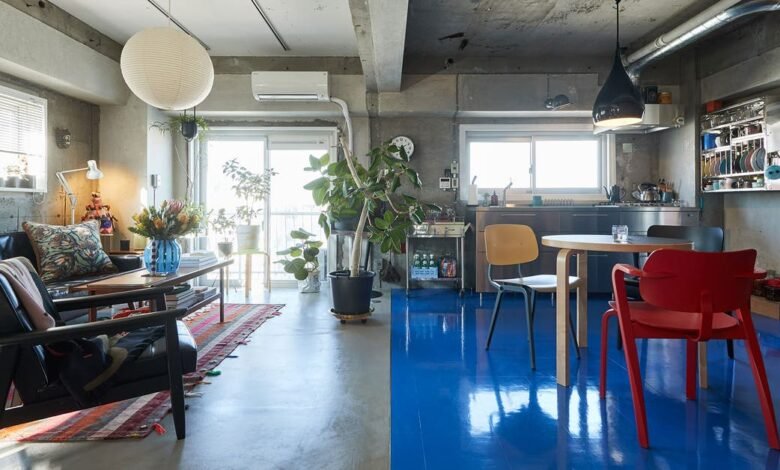Watch Out! Transform Your Single Room into a Multipurpose Paradise Now!

Mastering Interior Design Through Smart Zoning Techniques
Interior design is an art, and incorporating effective zoning techniques can elevate your living spaces into functional and aesthetically pleasing environments. Whether it’s a cozy apartment or a spacious house, understanding how to zone your area can optimize comfort and usability.
What Is Zoning in Interior Design?
Zoning refers to the strategic division of a space into distinct areas that serve different purposes. This approach allows individuals to navigate and utilize their homes more efficiently while maintaining a cohesive design. The ultimate goal is to create a harmonious balance between style and function.
Why Consider Zoning?
- Improves Functionality: Effective zoning ensures that each area within a room is designated for specific activities, making everyday tasks easier to manage.
- Enhances Aesthetics: When done correctly, zoning can create visually appealing contrasts and highlights within a space.
- Increases Privacy: By separating zones, you can maintain privacy in areas of your home while still enjoying an open-plan layout.
Essential Zoning Techniques
1. Utilize Furniture Arrangement
The way you arrange furniture plays a crucial role in defining zones. Grouping pieces, like sofas and coffee tables, creates a lounging area, while strategically placing a dining table can signify a dining zone. Consider the flow of movement between areas, ensuring each space remains accessible.
2. Use Area Rugs
Area rugs are fantastic tools for zoning. They visually segregate spaces while adding warmth and texture. In an open-plan layout, a rug can help distinguish the living area from the dining area without the need for physical barriers.
3. Incorporate Room Dividers
Room dividers can serve both practical and aesthetic purposes. From elegant bookcases to more structured screens, they create a physical boundary between zones. Choose designs that enhance the room’s character while offering the separation you need.
4. Consider Lighting
Lighting is a powerful tool for establishing zones. Varied light sources, like pendant lights above dining areas or soft floor lamps in reading corners, help define each space. Layer your lighting to create different atmospheres depending on the time of day.
5. Use Color and Textures
Different paint colors or wallpaper can visually separate areas while offering an inviting ambiance. You can also play with textures—like a smooth finish for a kitchen and a cozy fabric for a living area—to enhance the feel of each zone.
Pros and Cons of Zoning
| Pros | Cons |
|---|---|
| Improved functionality and organization | Can become cluttered if not managed well |
| Increased aesthetic appeal | May require significant investment in furniture or decor |
| Enhanced privacy in shared spaces | May limit openness in smaller spaces |
| Ability to express personal style | Over-zoning can create a disjointed feel |
Implementing Zoning Ideas in Various Spaces
Living Room
The living room is typically the heart of the home, and this makes it a prime candidate for zoning. Start with a central seating arrangement and branch out zones for entertainment—perhaps incorporating a TV area—and a reading nook tucked away creatively.
Kitchen and Dining
In an open-plan kitchen, zoning can be crucial. Use furniture, like an island counter or breakfast bar, to separate these spaces while maintaining fluidity. Consider placing the dining area close to the kitchen for optimal functionality.
Home Office
With the rise of remote work, a designated home office space is a must. Zoning can help by creating a boundary between work and relaxation areas. This might be a corner of the living room or a spare room transformed into a dedicated workspace.
Bedroom
Zone your bedroom by separating relaxation and dressing areas. A well-placed screen could help create privacy for a dressing area, making the space more functional.
Tips to Remember
- Know Your Space: Every room has unique characteristics. Analyze the dimensions and layout before deciding on zoning strategies.
- Be Flexible: Your needs may change over time; be open to adjusting your zones for better functionality.
- Stay Cohesive: While distinct zones can be created, aim for a unified overall design to avoid a discordant feel.
Conclusion
Zoning in interior design is not merely about partitioning your space; it’s about enhancing your lifestyle. By recognizing the importance of functional zones, using the right techniques, and being mindful of your home’s flow, you can create a beautiful and practical living environment. Whether you’re redesigning an entire home or just refreshing a single room, smart zoning can make all the difference.





